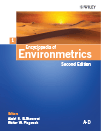Edge Effect
Abstract
A common objective in sampling a population of biological, ecological, or environmental concern is an inference about the mean or total of some attribute per unit area. In many instances, population attributes are measured in the field by compositing information collected on plots of non-negligible extent. For example, a forest inventory may count the number of trees and measure their basal area on circular plots. Fish population size might be estimated by counting the number of fish in selected stream reaches in a basin. Estimates of total biomass in a region could be obtained by collecting all biomass in randomly located quadrats. Unfortunately, it is well documented that this general method can result in a discrepancy, often called edge-effect bias, between the expected value of the estimator and the true value of the total. This discrepancy results from lack of coherence between the measured density and the true density stemming from injudicious handling of plots that are near to or actually straddle the domain boundary. Unless such plots are treated appropriately, population elements near the boundary are weighted incorrectly in computing the overall total. Because edges often have properties that are distinctly different from interior properties, giving an incorrect weight to the edges can result in substantial bias. This article gives an explicit definition of edge-effect bias, provides a sufficient condition for its absence, and discusses techniques to counter it.



